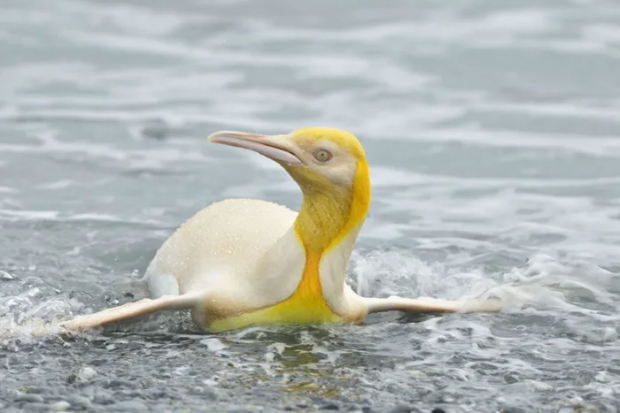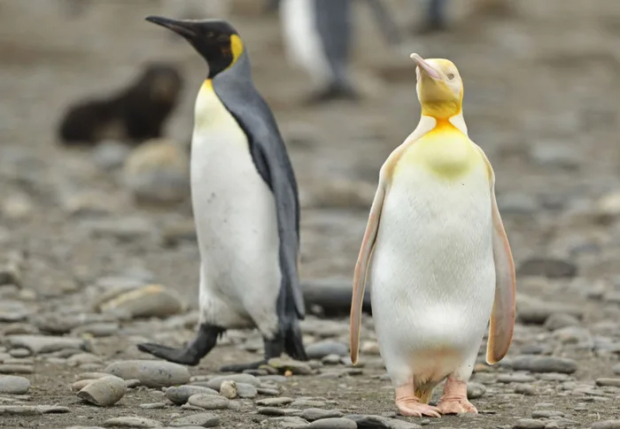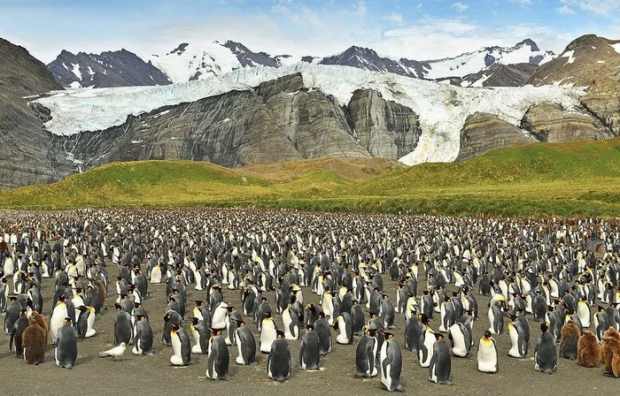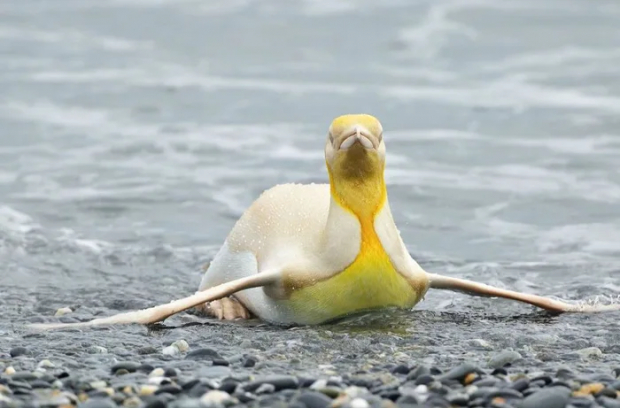Wildlife Photographer Managed To Capture Very Rare Yellow Penguin In Once-In-A-Lifetime Pictures
A wildlife photographer has posted a once-in-a-lifetime picture of what he thinks is a “never before seen” yellow penguin.

1
Belgium-based wildlife and landscape photographer Yves Adams was leading a two-month photo expedition in the South Atlantic in December 2019 when the team made a stop on an island in South Georgia to take photos of a colony of more than 120,000 king penguins. While unpacking some safety equipment and food onto Salisbury Plain, Adams saw a peculiar sight he had never seen before: a penguin with vibrant yellow plumage. Adams said: “I’d neither seen nor heard about a yellow penguin before. There were 120,000 birds on that beach and you could easily tell this one apart from all the others.”

2
Fortunately for the photographers, the peculiar penguin landed on the beach near the team, meaning they managed to get a perfect view of it unobstructed by the sea of penguins and seals in the area. Adams also said: “We were really lucky the bird landed the spot where we were. Our view wasn’t blocked by a huge group of giant animals. Normally it’s nearly impossible to move on this beach due to these animals.” “It was amazing when he decided to land by us. If it had been only 50 meters away we wouldn’t have been able to capture these mindblowing photographs.”

3
The penguin’s peculiar coloring is because of a condition called leucism, which results in a loss of pigmentation. Adams added: “What you see is a leucistic penguin. This penguin’s cells don’t produce melanin anymore so its black feathers become this yellow and creamy color.” A study published in the Journal of the Royal Society Interface stated that the yellow pigment in penguin feathers is chemically different from all other molecules that are known to give color to feathers.

4
According to the researcher named Daniel Thomas: “Penguins use the yellow pigment to attract mates and we actually suspect that the yellow molecule is synthesized internally.” “This molecule is different from any of the five known classes of avian plumage pigmentation and represents a new sixth class of feather pigment. As far as we know, the molecule has no similarities with any other yellow pigments that are found in a penguin’s diet.” “In the case of this entirely yellow penguin, though, it’s not certain whether its distinctive plumage makes the bird ultra-attractive or ultra-repulsive to the females.” Adams managed to take thousands of photos over the course of the expedition, which continued for 8 more weeks after this noteworthy sighting, and the photographer has just found and edited these images in the course of trawling through the giant collection.

